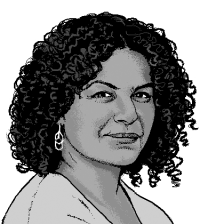
I have a small, cloth-covered journal in which I write down prayers. Some I come across in books or liturgies; others are my own. A few years ago, when my children were going through serious health crises and life felt bleak, I wrote this prayer: “God, I am here. You are here. Amen.”
For months, it was the only prayer I prayed—the only prayer I could pray. I couldn’t say “thank you” and mean it. I couldn’t say “help,” because I was tired of asking for help. I didn’t feel capable of awe or reverence. The only honest prayer I could make was a prayer of bare-bones presence, mine and God’s.
Read our latest issue or browse back issues.
I returned to this prayer of presence recently as I prepared to co-teach a session on Benedictine spirituality at a church retreat. My assignment was to reflect on the vow of stability—that is, the vow of community and continuity that Benedictines make to a particular monastery. Unless a monastic is specifically sent somewhere else by her superiors, she remains in the monastery of her profession her entire life. A monk vows to stay put, to grow where he is planted.
For those of us who aren’t monastics, a vow of stability can still have beautiful and subversive power. Most of us live in cultures that encourage us to flee—if not physically, then psychologically. We’re taught to keep our options open, our commitments flexible, our exit doors accessible and well lit. We’re encouraged to believe that we’ll miss out on the best of life if we stay put and “settle.” So we habitually peek over fences and find the grass greener in our neighbors’ backyards. When it comes to faith, we fall prey easily to “if-only” or “when-then” thinking: If only I could find a better church/Bible study/spiritual director/daily devotional, my faith would deepen. When I graduate/get married/pay off my loans/move/become a parent/retire, then I’ll experience God’s presence and love.
We are by nature a restless species, prone to wander. We like the excitement of perpetual motion. We like keeping our eyes on distant horizons. This isn’t always a bad thing. Sometimes our restlessness leads us to follow in our Creator’s footsteps as artists, makers, designers, and innovators. But the shadow side of this creative capacity has serious consequences.
In our contemporary digital context, the time we spend online shortens our attention spans, teaching us to flit from post to post. Our social media platforms lead us to curate our lives in terms of highlights and mountaintop experiences, adventure-filled vacations and shiny photo ops.
St. Benedict understood the restlessness of heart that leads us to avoid the “here” of our lives. He knew the temptation a young monk might feel to leave his assigned setting in search of a “better” monastery filled with better people, better discipline, better opportunities for growth and flourishing. He knew that putting down roots in imperfect soil is painful, unglamorous work.
But stability insists that growth, fulfillment, and joy don’t come from frenzied activity, constant change, or spiritual compartmentalization. They come when we consent to inhabit a particular place in a deep, holistic, and attentive way. When we stop peeking around corners for the next best thing. When I say, “My heart is steadfast, O God” (Psalm 57:7). When I decide, in Benedictine sister Joan Chittister’s words, that “where I am is where God is for me.”
God is where the ordinary is. God inhabits the mundane, the imperfect, the broken, the boring. God is no less present in our waiting rooms, traffic stops, board meetings, and toddler bedtime rituals than in a jaw-dropping cathedral or the ocean at sunset. To live into this truth is the work of stability.
But to say that stability is hard is a laughable understatement. When I first wrote my two-sentence prayer, it was from a place of resignation and defeat. Each time I prayed, “I am here,” it was as if I were gritting my teeth and willing my heart not to run. When I prayed, “God, you are here,” I was praying my bewilderment, my doubt, my almost-shattered hope. Are you here? How can you possibly be here?
But over time, both halves of the prayer shifted. I began to see the value of paying close and tender attention to the particulars of “here.” The “here” of my son’s physical pain, of my daughter’s anxiety and depression, of my helplessness in the face of their suffering. I began to see how God is present not despite these circumstances but in them. Not in flashy ways, but in the small, mundane graces that make life both bearable and beautiful. The brief respites from the pain. The unexpected bursts of laughter. The kindness of friends, family, and strangers. The weekly rhythms of liturgy and Eucharist that nourish my hunger. The subtle shift in perspective that comes when we decide that “here” is holy.
Among other things, stability teaches us that we can’t escape from ourselves. Whatever I carry within myself—a quick temper, a sense of inadequacy, a tendency toward resentment, a panicky heart—will remain my companions even if I decide to run. Only a willingness to stay and look closely at the truth of who I am enables God to do the transformative work we call salvation. But this requires that we accept the “here” of our unfinishedness. The long, messy road of the half-baked and the not-yet.
In the end, God’s faithfulness makes our attempts at stability possible. Because God is here, I can try to be here, too. And because God stays put, I have a place to return when I run away.
A version of this article appears in the print edition under the title “A prayer of presence.”







